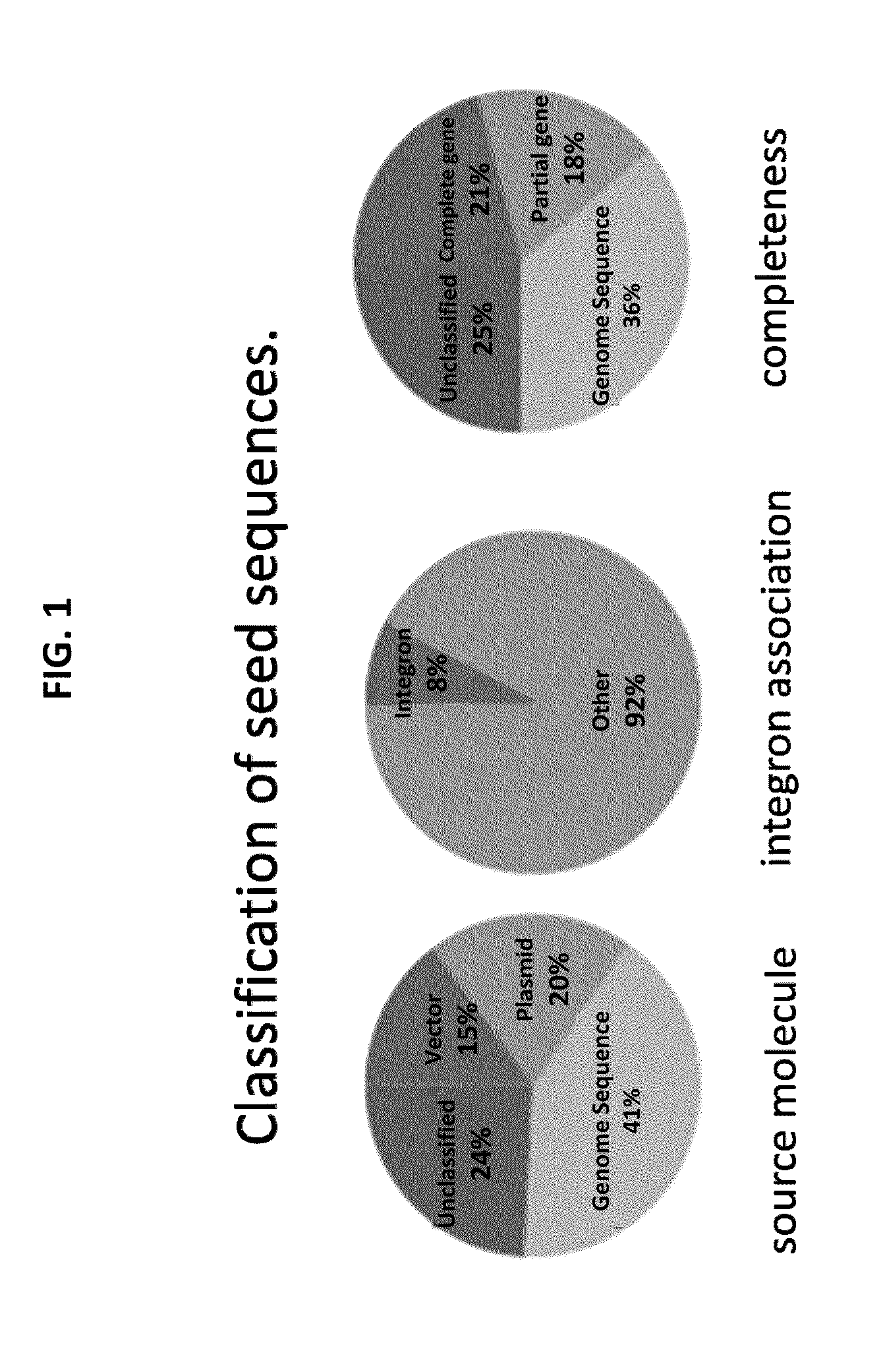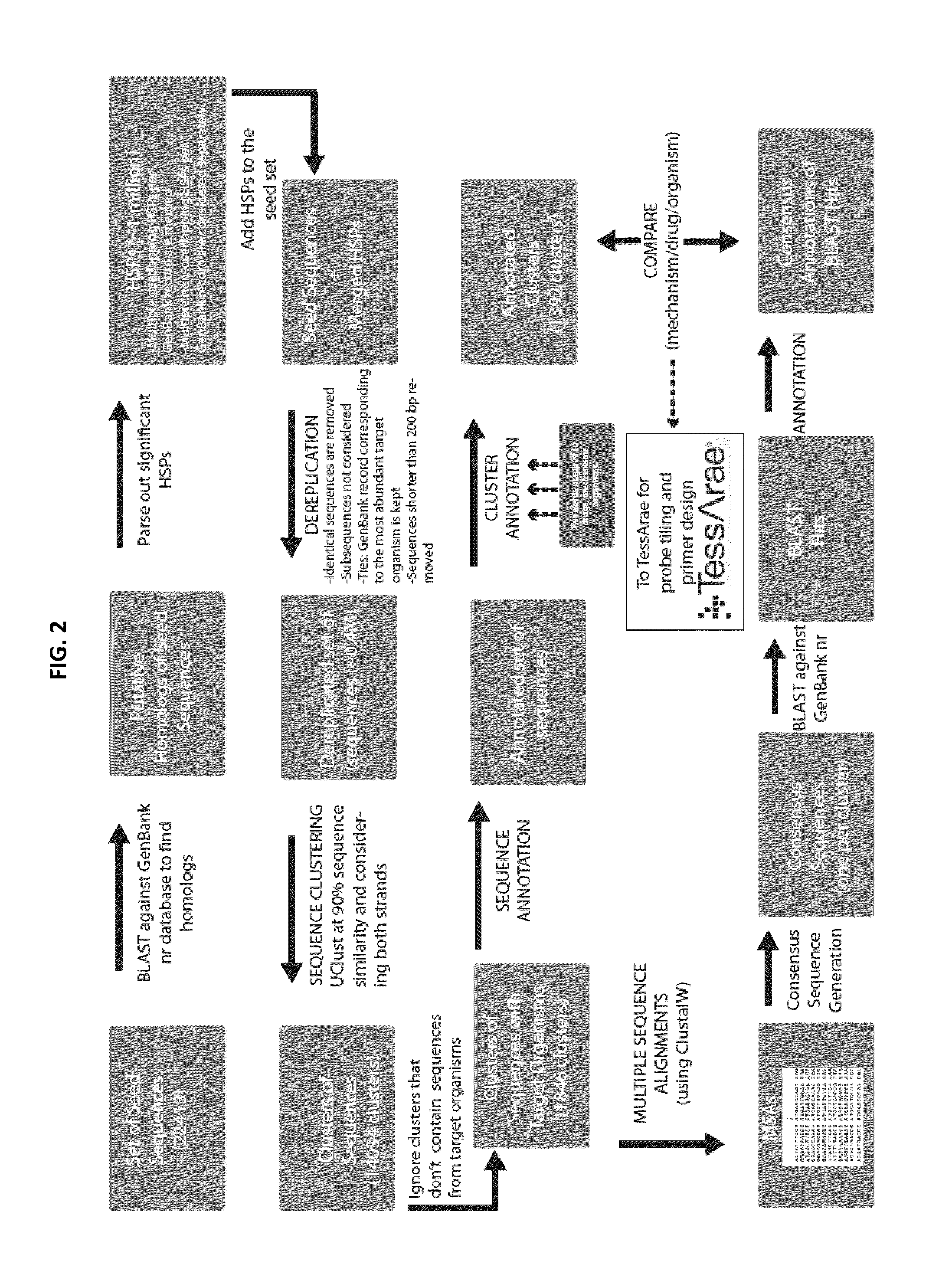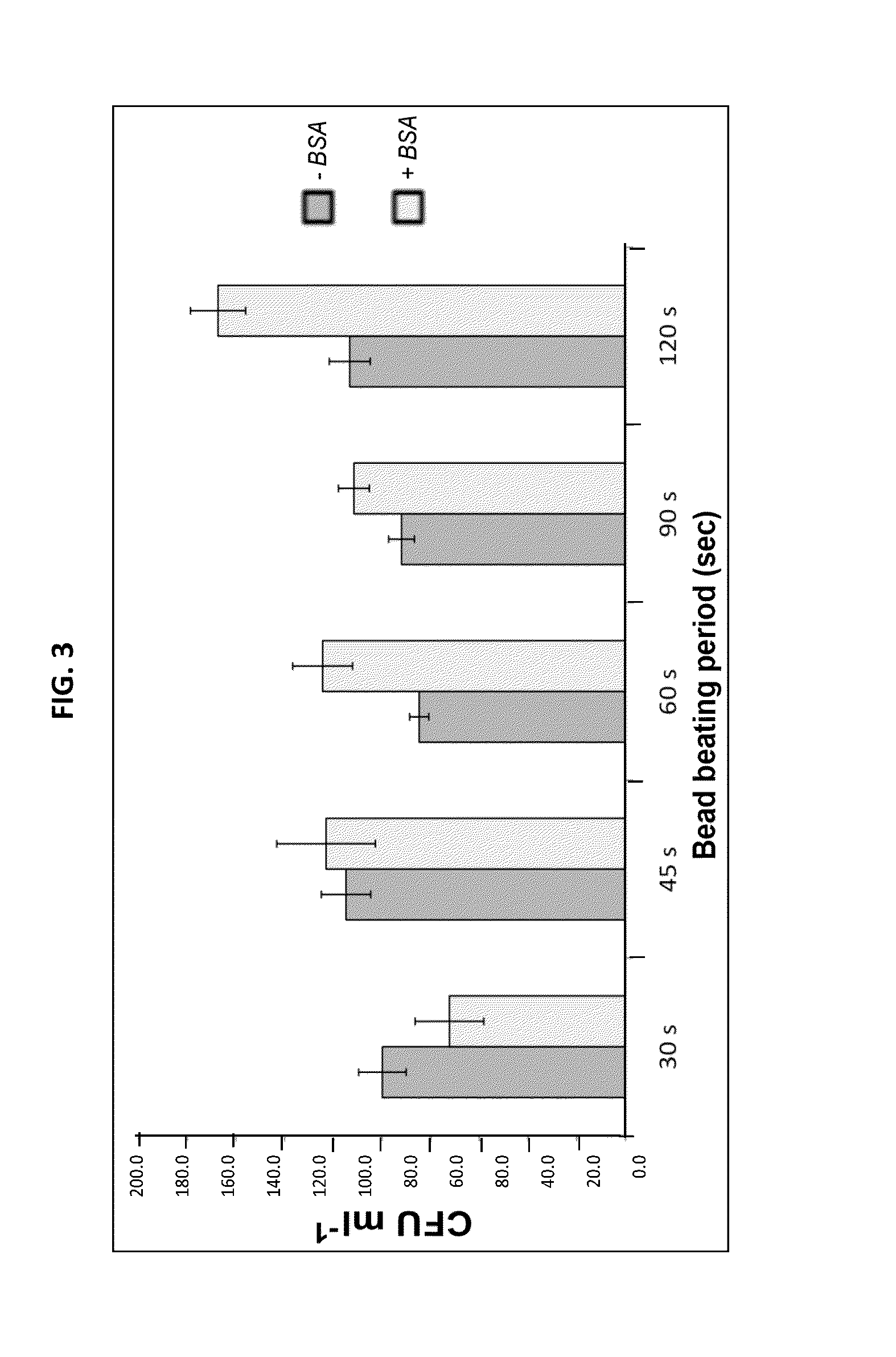Systems and Methods for Detecting Antibiotic Resistance
- Summary
- Abstract
- Description
- Claims
- Application Information
AI Technical Summary
Benefits of technology
Problems solved by technology
Method used
Image
Examples
example 1
Genotypic and Phenotypic Analysis of a Collection of Over 600 Strains to be Used for Array Validation and Predictive Model Building
[0118]To date, we have collected at least 20 representative strains for 22 of 44 pathogenic bacterial species (Table 1, 3), generating a bank of 604 clinical isolates of which 567 strains are characterized with respect to their antibiotic resistance phenotype (determined by standard clinical laboratory techniques appropriate for that strain and antibiotic-susceptibility profile). On-going work includes characterization, in our CLIA-approved laboratory of the resistance profile of Haemophilus influenzae which is not routinely profiled for antibiotic resistance in the clinical lab. All strains have been successfully cultured under species-specific optimal culture conditions (aerobic and anaerobic). Stock cultures have been made, banked and cataloged for every strain and parallel DNA and RNA extractions have been performed for every strain, quantified, cata...
example 2
Optimization of Clinical Sample Processing
[0123]Building on our method for sample collection, handling and storage, we have continued to examine aspects of this protocol that may impact efficiency of the extraction protocol and, consequently the ability of the resequencing array-based assay to detect and profile strains. Further optimization of bacterial DNA extraction, yield, and PCR-based quantification from blood samples is being pursued. We have found that longer periods of bead beating increases the amount of DNA extracted by the Qiagen BioRobot method (an automated system for rapid extraction of nucleic acids from samples) particularly that of gram positive organisms, without sacrificing the integrity of DNA extracted from Gram negative species in the same sample (dark gray bars, FIG. 3). We have also found that the addition of bovine serum albumin [BSA] decreases PCR inhibition associated with blood samples and further enhances the sensitivity of detection. This improvement i...
example 3
Prototype Array Design
[0134]We completed tiling probe sets for all candidate detector tiles, apportioned to Bacterial genera / species (262 tiles) and Resistance determinants (1030). The array platform we are using has the capacity to accommodate 1,345 tiles of up to 224 bp each, we therefore dramatically expanded the targets included on the array from 11 to 44 clinically relevant bacterial species and their associated antibiotic resistance determinants and are currently at 99.96% of the array capacity. These additional species were chosen based on their clear role in pathogenesis and their detection in a number of recent airway microbiome studies. The final list of all bacterial species to be detected by this tool are described in Table 4 or Table 7. These targets are represented by 262 tiles totaling 58,688 bp (of a possible 303,000 bp) on the array. The 262 tiled sequences are identified herein as SEQ ID NOs: 971-1232. The probes for each tile are the same as the sequence for each ...
PUM
| Property | Measurement | Unit |
|---|---|---|
| Electrical resistance | aaaaa | aaaaa |
| Antimicrobial resistance | aaaaa | aaaaa |
Abstract
Description
Claims
Application Information
 Login to View More
Login to View More - R&D
- Intellectual Property
- Life Sciences
- Materials
- Tech Scout
- Unparalleled Data Quality
- Higher Quality Content
- 60% Fewer Hallucinations
Browse by: Latest US Patents, China's latest patents, Technical Efficacy Thesaurus, Application Domain, Technology Topic, Popular Technical Reports.
© 2025 PatSnap. All rights reserved.Legal|Privacy policy|Modern Slavery Act Transparency Statement|Sitemap|About US| Contact US: help@patsnap.com



